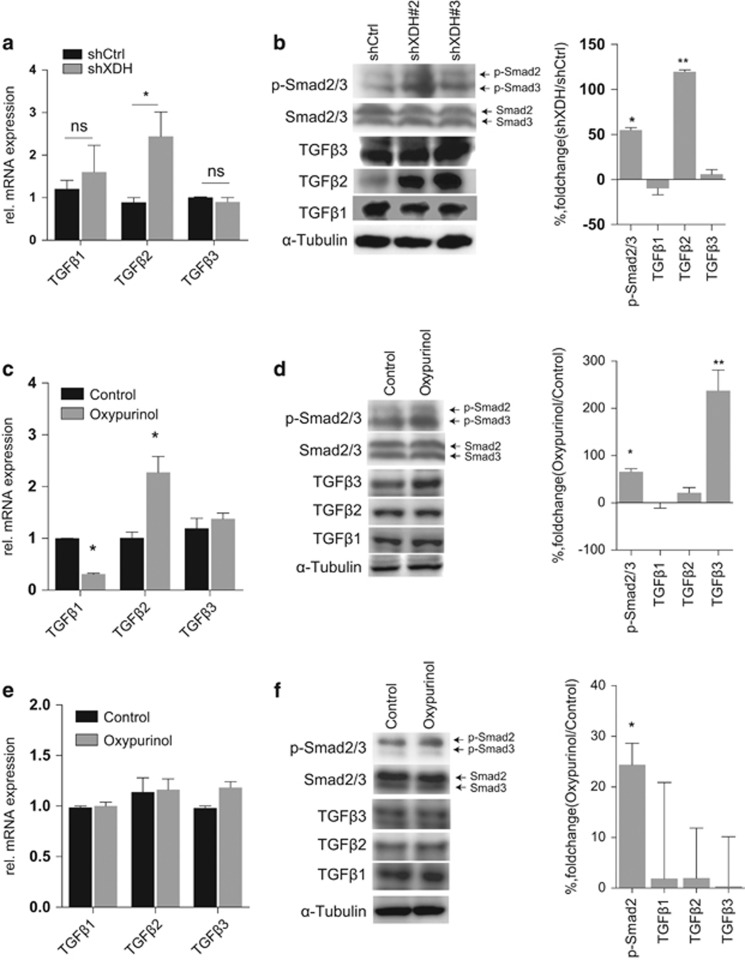Figure 3.
XDH negatively regulates the TGFβ-Smad signaling pathway in HCC cells. (a) qRT–PCR analysis of TGFβ isoform transcript expression in HepG2 cells. (b) Western blot analysis of TGFβ isoform and Smad2/3 phosphorylation levels in HepG2 cells transfected with control shRNA (shCtrl) or shRNA against XDH (shXDH). (c) qRT–PCR analysis of TGFβ isoform transcript expression in HepG2 cells in the absence or presence of 50 μM oxypurinol. (d) Western blot analysis of TGFβ isoform transcript and Smad2/3 phosphorylation levels in HepG2 cells in the absence or presence of 50 μM oxypurinol. (e) qRT–PCR analysis of TGFβ isoform transcript expression in Huh7 cells in the absence or presence of 50 μM oxypurinol. (f) Western blot analysis of TGFβ isoform transcript and Smad2/3 phosphorylation levels in Huh7 cells in the absence or presence of 50 μM oxypurinol. Quantitation of protein levels was performed using ImageJ software. All data are expressed as the mean±s.e.m. of three experiments. Unpaired t-tests were performed to assess statistical significance. XDH, xanthine dehydrogenase; qRT–PCR, quantitative reverse transcription polymerase chain reaction; HCC, hepatocellular carcinoma; TGFβ, transforming growth factor beta; Smad, mothers against decapentaplegic, drosophila; shRNA, small-hairpin RNA; rel., relative. ns, not significant, *P<0.05, **P<0.01, ***P<0.001, ****P<0.0001.

